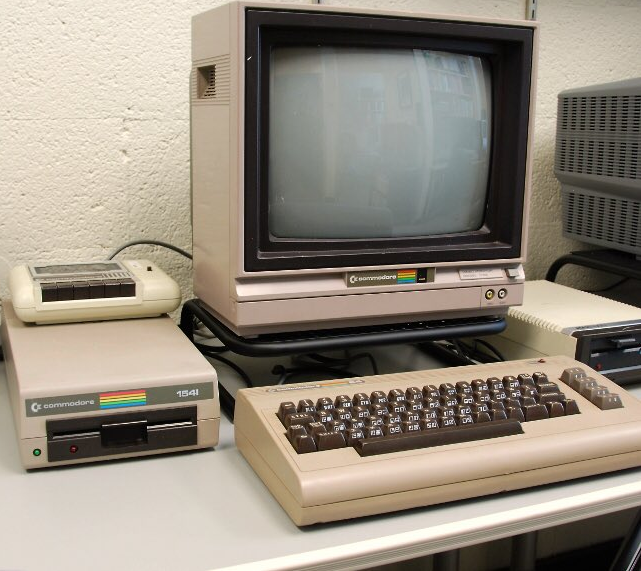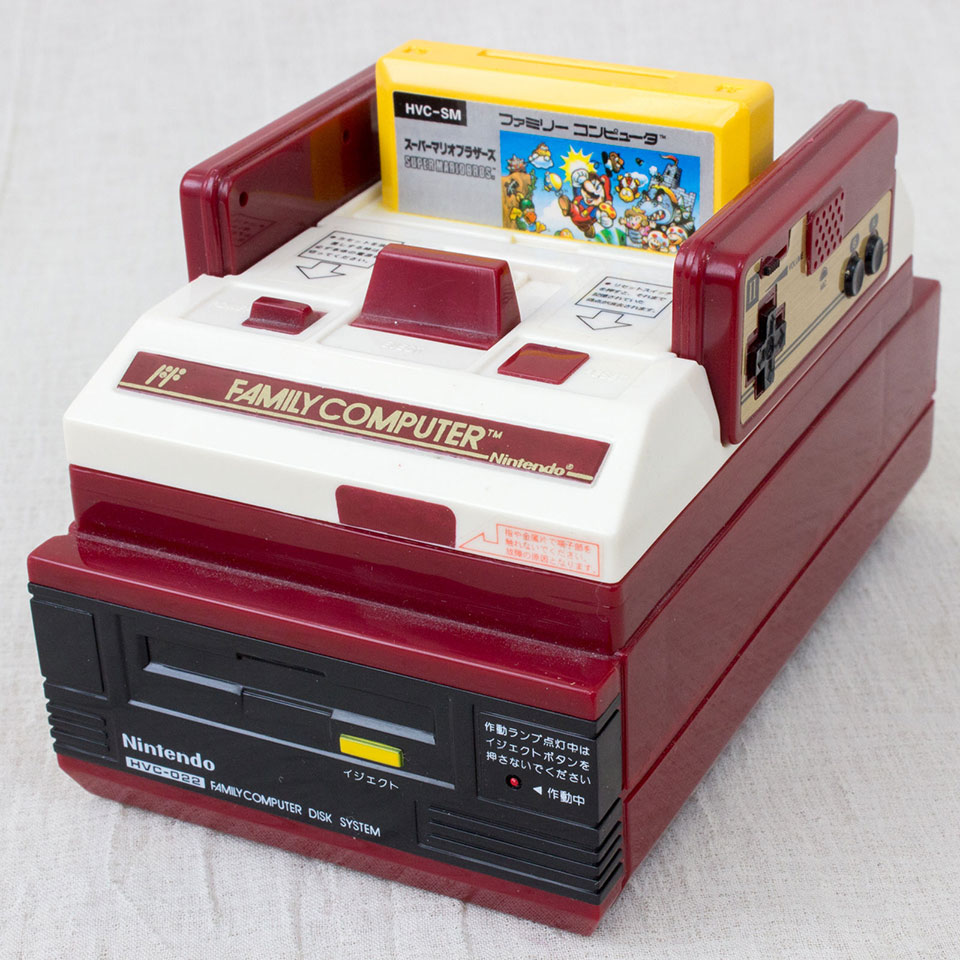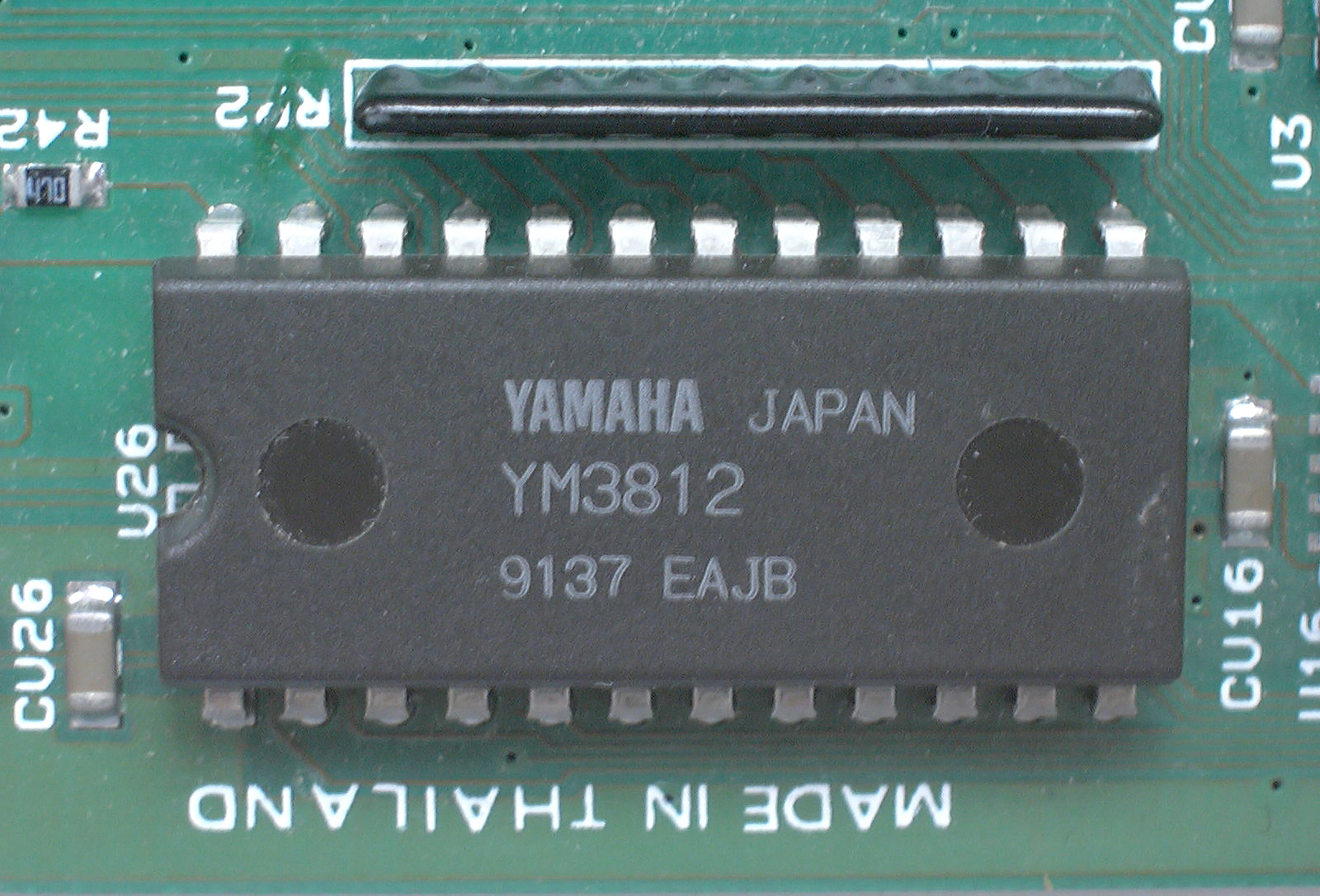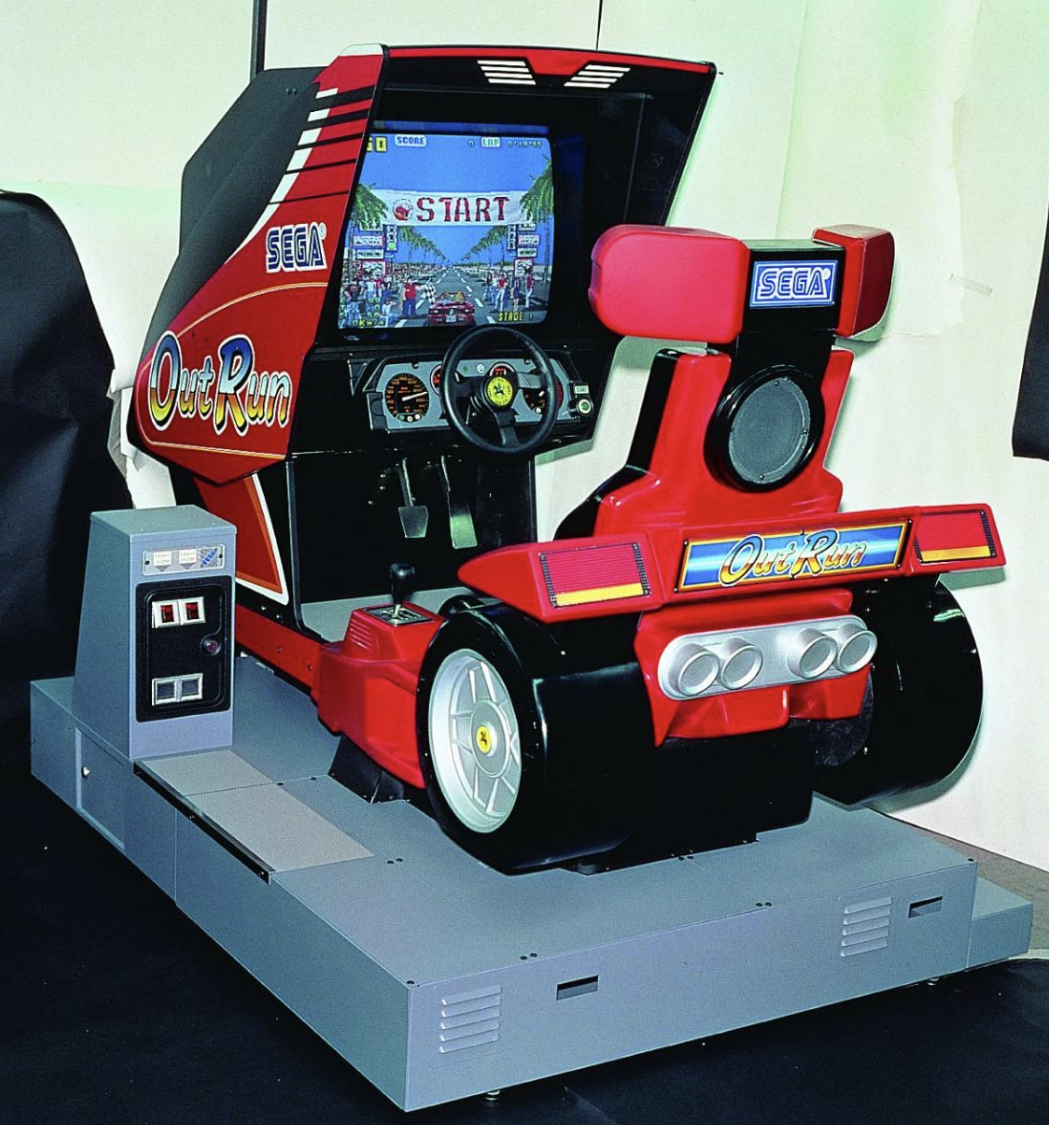Can you imagine the time that video game consoles had not invaded the living rooms, and you had to go to the arcade hall with a pocket full of coins to clench the hunger for gaming? This is how the games started their journey from the arcades to the home television sets. The development of game music and game sound walked hand in hand with the technology that was available at the given moment. Gradually the development led the games to the cloud servers storing the data and VR sets to be enjoyed in the middle of our apartments while wearing headphones and listening to three-dimensional sound to fully immerse in the gameplay experience. This article concentrates on the development of music for video games mainly in Japan and has American examples as well.
Although the search for which one was first is a bit of a complicated and even redundant task, it is safe to say that the history of game music drew inspiration from the sounds that the games produced. Earlier games like Pong by Atari from 1972 had mostly pitched electronic sounds like Speed Race (1974) by Taito. The first commercial gaming console, Magnavox Odyssey, from 1972, could not produce any sounds. Gun Fight or Western Gun (1975) played a monophonic excerpt of Chopin's 'Funeral March' whenever the character bit the bullet and was killed. This has been said to be the first use of a melody line in a game. Like any other sounds in music history, the beeps and blips slowly started to get musical pitches and other tonal properties to them when humans began to manipulate them. The musical sounds were organized in succession, and hence the first soundtracks like the bass melody in the arcade game Space Invaders from 1978.
The game was released by the Japanese video game company Taito and developed by Tomohiro Nishikado. Even though the four-note ostinato can be argued for its musical merits, it is still considered a landmark since the video games before that didn't have music at all. The reason for the ever-fastening bass line is due to the processor's graphic processing capabilities. When the number of aliens gets fewer on the screen, the processor also renders the alien's animation graphics faster, synchronized to the musical track. Nishikado noticed this in the production phase and decided to keep it in the end product, thinking that it will add excitement to the gameplay. The bass line from Space Invaders inspired Jesse Saunders to create his album 'On and On' in 1984, which has later been recognized as one of the first house music contributions.
Talking about video game music
Before digging deeper into the topic, we must define the common concepts that govern its understanding. We usually meet up with terms when talking about computer music, such as polyphony, waveform, sound chip, and pulse-code modulation.
Polyphony means the number of melodic lines played simultaneously with an array of instruments or a musical system. These lines have to be considered as separate melodies by themselves or independently from others. The interaction and combination of these melody lines are the ones that create polyphony. Monophony, on the opposite, comprises only one line of musical melody, like in a genre called plainchant. Oscillators don't need any input to create continuous, repeated, and alternating waveforms. The frequency of the waveform is determined by the components that are in the circuit.
A Sound Chip is an integrated circuit that processes audio signals. It can have electronics that are either digital, analog, or a mix between these. PSG:s (programmable sound generators), wavetable synthesis, and FM (Frequency Modulation) Synthesis have all their dedicated forms of sound chips. They were widely used in arcade game systems and video game consoles. The sound chips are integrated into a sound card or audio card that allows the users with input and output connectors for audio signals. It then further directs these signals to be used in the computer by several applications and programs.

Pulse-code modulation
PCM (pulse code modulation) is a way to encode the audio into a bitstream. The technique was already developed in 1939 and was then used to pass digital signals into analog communications channels. PCM typically allows audio to be sampled and quantized in digital form to an uncompressed format in music. MIDI (Musical Instrument Digital Interface) protocol means that the musical instruments can flexibly be connected with an array of other musical instruments or computers to communicate with each other. The communication in MIDI happens in the form of event messages that define the instructions that the musical notes get when they are played out. The instructions can be, for example, pitch, velocity, panning, or clock signals that set the tempo for the melody.
The waveform of a given signal means the shape of it as a time-related function. In music or acoustics, it means a steady sound that is periodic and how it changes the air pressure when it is produced into a medium like air at 22 celsius degrees. In FM (Frequency Modulation) Synthesis, the waveform's frequency is modified or altered by the modulator of a different frequency. Whether the result leads to harmonic or inharmonic sounds depends on the primary signal's relation to the modulating signal on the frequency level.
From arcade game systems to console game systems (mostly in Japan)
When we talk about Japanese video game music, the scope is almost solely on video game console music. Unlike in the rest of the world, the game industry in Japan is heavily concentrated around gaming consoles. Before them, many arcade games were produced by game companies like Konami, Taito, Namco, and Sega. These became significant contributors also for the video game console games later on. The earlier history of arcade and console games can be seen as a more homogenous era in the evolution of games since the restrictions in music delivery were due to technological constraints, especially in the storage space and sound processing abilities. These limitations on the technical side gave rise to many innovations and regulated how music could be represented in the games of that era. The development of early home consoles had already started earlier in the 1970s, but the consoles were not yet very versatile. The advent of the third generation of video game consoles and the usage of new forms of sound synthesis when the sound chips evolved had a massive impact on game music.
In 1978 one of the most influential Japanese bands called Yellow Magic Orchestra released their first album called Yellow Magic Orchestra. It had tracks classified as chip music and showed a possible way to mix popular music with games. The lineup of the band was Haruomi Hosono (bass, keyboards, and vocals), Yukihiro Takahashi (drums and lead vocals), and Ryuichi Sakamoto (keyboards and vocals). All of the members have ever since becoming renowned figures in the Japanese musical culture on their own as well. Many of the early hip-hop and techno artists drew influence from this album, especially the single release of 'Computer Game' Mainly because game music is one of the first forms of music that children encounter in their homes. The influences are also subconscious in this way.
1978 also marked good news for the developers of arcade games. A programmable sound generator or PSG called SN76477 by the American company Texas Instruments saw daylight. For example, it was a sound chip that was in use in the Space Invaders cabinet. Many companies started to produce their sound interfaces, and they all had their noticeable sonic qualities. Early PSG:s had to be programmed using programming languages like BASIC, which meant that the composer had to possess programming skills or collaborate with a programmer. With a great deal of effort, these pioneer video game composers could generate compositions that were both intricate and stimulating, enhancing the gameplay experience. They mark one of the earliest forms of immersion in games.
As most of the games of that time, also Pac-Man in the year 1980 was developed for the arcade halls by another renowned Japanese video game company, Namco. Originally named Puck Man, the game became a commercial success and has ever since belonged to modern classics. The aim of this game is to control the yellow puck-shaped main character. He eats the dots on the screen and tries to avoid the ghosts that are chasing him. The so-called "Power Pellets" turn the spirits blue, and Pac-Man can eat them, return them to the center and collect extra points. The music can be classified more like a jingle accompanied by in-game sounds like Pac-Man eating the dots and the siren-like sound effect that the ghosts produce. This game had its custom-designed Namco WSG (Waveform Sound Generator) sound chip in it. They also customized the soundboard for their 1981 game Galaga. The legacy of Pac-Man is the thing that matters. It has influenced popular culture massively, and the music has been sampled to songs as well. The other leading composer, Shigeichi Ishimura, became later an executive for Bandai Namco Entertainment Inc., born in 2006 from the coupling of Namco and Bandai.
There were so-called beeper speakers in the earliest forms of home computers, which got their controls by the CPU. When the speaker made a clicking noise, the CPU had to measure that correctly for the sound to be produced. The computers did not have the processing power to do anything else simultaneously, though, and composing was very time-consuming because of these technological restrictions. The rise of the dedicated sound chips in the early 1980s made it possible to create sounds for specific operating systems that became their characteristic features. The games typically had soundtracks that were repetitive and fast-paced, reflecting the quick reaction speed acquired in many games. The structure of the songs usually followed the typical hit song formula where the verse is followed by the chorus several times in succession.

Commodore 64
When the Commodore 64 home computer was released in January 1982, it came with an inbuilt sound chip called MOS 6581 SID (Sound Interface Device). Doubting that the designer Robert Yannes knew what kind of an impact it would have for years to come. The Commodore 64 had hence a 3 note polyphony with its SID chip but produced four different waveforms, namely square, triangle, sawtooth, and noise. These could be combined in any imaginable way. In the long run, composers came up with a way to spontaneously change the sounds of the waveforms. This computer sold worldwide about 12-17 million units and still is highly valued for its sound capabilities. Some companies make SID-based hardware synths, and software versions are available as well. Commodore 64 was released in Japan as Commodore MAX in 1982, but only an estimated 50 000 units were sold. Hence the model was discontinued.

Famicom Disk System
Arcade games that later became console classics included titles like Donkey Kong, Mario Bros., Wild Gunman, and Popeye. These were released by Famicom or Family Computer together with its 1983 console system in Japan. This system became later known as Nintendo Entertainment System or NES when it sold units in North America in 1985. The sound chip that both Famicom and NES used was called Ricoh 2A03 or 2A07 for the PAL version. One does not have to mention how successful the console became ever since. The C 64, NES, and later systems like Amiga 500 and had their kinds of personalities when it came to the sounds and the music they could produce. In NES, like in the early PSG:s, the 2 first voices can merely produce a pulse wave or a square wave, and the third voice a triangle waveform, which is mainly in use in the lower bass notes. The fourth voice is a noise channel to create rhythmic percussive elements to the tunes, and the fifth voice for PCM (Pulse Code Modulation) sampled sound files.
Dragon Quest
One of the games that never found wider popularity outside Japan must undoubtedly be Dragon Quest, and especially the third part called Dragon Quest III: The Seeds of Salvation. The game was released in North America as Dragon Warrior, but the sales on the continent stayed relatively modest. In Japan, this third part set records in sales with 1.1 million games sold during the first day, and the audience was queuing to get their cartridges. The game was first released initially in 1988 on Famicom and later also on NES. It is a classic RPG, where the main character travels through a fantasy world and slowly makes a heroic journey to Demon Lord Baramos' lair, where the beast will be defeated. Battles are turn-based like in the earliest Final Fantasy games. The music was composed by Koichi Sugiyama, responsible for the music for all of the sequels. What makes the soundtrack so revolutionary and untypical is that Sugiyama was one of the first composers ever to use a classical score recorded using a live orchestra. The upbeat theme labeled "Overture" plays similarly throughout the game series. His style has been described as nostalgic, influencing late Baroque and Classical style elements in it.
Sound chips and other innovations
With the advent of standardizing the MIDI (Musical Instrument Digital Interface) technology in 1983, computers, synthesizers, and hardware like sequencers could communicate with each other using a dedicated protocol. Even a full orchestra could be used with the help of it, and you could play a rack of synthesizers just with the use of a tiny keyboard. This served the needs and opened a new world of possibilities for the game music composers. They could use several techniques and a more comprehensive array of musical instruments for their compositions. It was not earlier than 1991 that the MIDI had an inbuilt library of sounds that consisted of 128 instruments. This made it possible to get the samples to sound like they were intended and similarly every time.

Yamaha YM3812 sound chip
The YM3812 sound chip that was inbuilt in many synths of that time changed the game. It could play 9 channels of sound that could be programmed separately. The channels had 2 oscillators each and highly modifiable waveforms. The FM (frequency modulation) synthesis that it was based on was already in use in Yamaha's top-seller DX 7 synthesizer. The keyboard and FM synthesis became a factory standard for the game composers from the mid-1980s until the mid-1990s. Merely the DX7 sold millions of units making it the best selling synthesizer of its time. The Yamaha FM sound chips were also used in many systems and consoles like Sharp X68000, Sega Master System, Sound Blaster sound cards, Korg synthesizers, NEC computers, Sega Mega Drive, Genesis, and Saturn.
The Commodore Amiga had a 4-voice stereo PCM sampling system onboard called Paula. With the music tracker or Modtracker, that was included, one could import own samples to the program and organize and modify them to an intelligible composition. Soundmonitor in 1986 was the first tracker software that allowed the users to make their musical tunes in it. After that in 1987 Soundtracker for Amiga's Paula and Soundtracker 2, a freeware program that evolved from it, became very popular as the factory standard for the subsequent demo scene as well. For the upcoming sound cards, the number of tracks could be further expanded. This chip was also found in many sound cards of that time, namely Sound Blaster, Pro AudioSpectrum 8bit, and AdLib and arcade games by companies like Toaplan and Nichibutsu.

Sega's OutRun simulator cabinet
Sega's released OutRun from 1986 was an arcade-based racing game that had non-linear gameplay, and the sit-down simulator cabinet in which the player could be seated while playing was something that had not been witnessed before in car games. The player could select the gameplay stereo soundtrack from the radio, which follows the idea that the player can choose from different routes to drive. The dedicated Sega PCM sound card used pulse code modulated audio in its sound generation. The style of the music is Latin and Caribbean music with uplifting melodies and vibrant rhythms. This game inspired its successor called After Burner in 1987, which was a fighter jet game with a motion simulator arcade cabinet. OutRun was designed by Yu Suzuki, and the music was composed by Hiroshi Kawaguchi and has been noted as one of the most influential racing games of all time. OutRun and its 1980s aesthetic approach inspired a 2000s synth-wave genre that carried the same name.
Summary
Many children get their first touch into music from video games. Children were the primary audience for early game developers, and they made their products with respect for children in mind. The Japanese game developers have understood this from early on. Hence, they have developed musical scores for arcade and later console games that are exciting, immersive, and enhance the gameplay experience. The gaming culture in Japan is quite heavily concentrated around console gaming, unlike in the rest of the world, where also computer-based games get to the best-seller lists.
The origins of game music can be traced to the pitched beeps and blips in the earliest digital games. Before that, early slot and pinball machines made sounds during gameplay to enhance the experience. These sounds eventually got more musical properties when they could be manipulated with different techniques. Musical abilities of the game sound increased with the development of the technology behind the sound chips integrated into the arcade machine sound cards and later on to the consoles.
The early history of video games was made by pioneers inside the restraints that the technology of the given time allowed, who had to make innovative choices to deliver their visions. They have paved the way for modern composers, who have sound cards and sequencer workstations capable of processing an enormous amount of musical data.
References
Fritsch, M. (2021). The Cambridge Companion to Video Game Music (Cambridge Companions to
Music). Cambridge University Press.
Golden age of arcade video games. Retrieved May 10, 2021, from
https://en.wikipedia.org/wiki/Golden_age_of_arcade_video_games.
Home video game console. Retrieved May 11, 2021, from
https://en.wikipedia.org/wiki/Home_video_game_console.
List of sound chips. Retrieved May 11, 2021, from
https://en.wikipedia.org/wiki/List_of_sound_chips.
MIDI. Retrieved May 12, 2021, from
https://en.wikipedia.org/wiki/MIDI.
Bent, Ian. Monophony. Retrieved May 12, 2021, from
https://ccnmtl.columbia.edu/projects/sonicg/terms/monophony.html.
Nintendo Entertainment System. Retrieved May 12, 2021, from
https://en.wikipedia.org/wiki/Nintendo_Entertainment_System.
Pac-Man. Retrieved May 11, 2021, from
https://en.wikipedia.org/wiki/Pac-Man#Music.
Payne, Thomas. Polyphony. Retrieved May 12, 2021, from
https://ccnmtl.columbia.edu/projects/sonicg/terms/polyphony.html.
PCM, Pulse Code Modulated Audio. (2020, August 9). Sustainability of Digital Formats.
https://www.loc.gov/preservation/digital/formats/fdd/fdd000016.shtml.
Pinball. Retrieved May 18, 2021, from
https://en.wikipedia.org/wiki/Pinball#Late_18th_century:_Spring_launcher_invented.
Pulse-code modulation. Retrieved May 12, 2021, from
https://en.wikipedia.org/wiki/Pulse-code_modulation.
RedBull TV. (2014, September 4). Diggin' in the Carts [Video]. RedBull TV.
https://www.redbull.com/int-en/shows/diggin-in-the-carts.
Waveform. Retrieved May 12, 2021, from
https://en.wikipedia.org/wiki/Waveform.
Images
Picture 1. Pulse-code modulation. Retrieved from http://ecevishnu1.blogspot.com/2013/11/types-of-modulations.html.
Picture 2. Commodore 64. Retrieved from https://www.area536.com/posts/commodore_64/.
Picture 3. Famicom Disk System. Retrieved from https://www.oko-7.xyz/products.aspx?cname=nes+disk+system&cid=67.
Picture 4. Yamaha YM3812 sound chip. Retrieved from https://en.wikipedia.org/wiki/Yamaha_YM3812.
Picture 5. Sega's OutRun simulator cabinet. Retrieved from https://forums.overclockers.com.au/attachments/upload_2019-1-14_8-31-31-png.5911/.


